Tokyo Ghoul: re Part 2 Blu-ray Review
Tokyo Ghoul: re Part 2 is a continuation of the first part, covering the remaining storyline of the manga, albeit cramming roughly 121 chapters into just 12 episodes which results in an uneven adaptation of the source material it’s based upon.
Please note that this review contains major spoilers for the events of Tokyo Ghoul: re Part 2.
Some time after the Tsukiyama Family Extermination mission, Haise Sasaki, now donning the Black Reaper moniker, is investigating famous author Sen Takatsuki as they are suspected of being a Ghoul. While this is ongoing, Haise is making regular visits to a Ghoul he “took possession” of, Hinami Fueguchi, who seems to knows Haise by a different but all too familiar name.
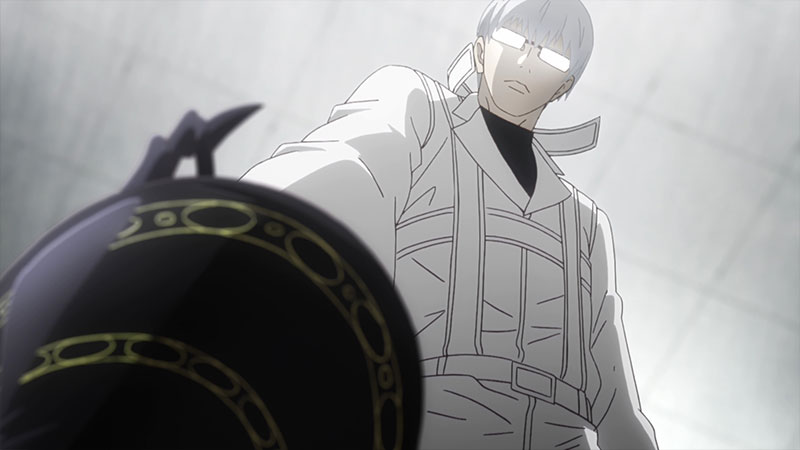
The plot initially moves at a very rushed pace as within a few episodes Kaneki has fully recovered his original personality, freed Hinami from the maximum-security facility known as Cochlea, and killed his mentor figure in Arima. Whilst this occurred, the CCG made a full effort to wipe out the remaining forces of Aogiri Tree by invading the Island of Rushima which acts as their base.
In amongst the breakneck pacing of the season we get glimpses and insights into the various characters that make up the story; these moments add a much-needed depth to an expansive cast that otherwise often barely got enough screen time due to the limited episode run and questionable story alteration.
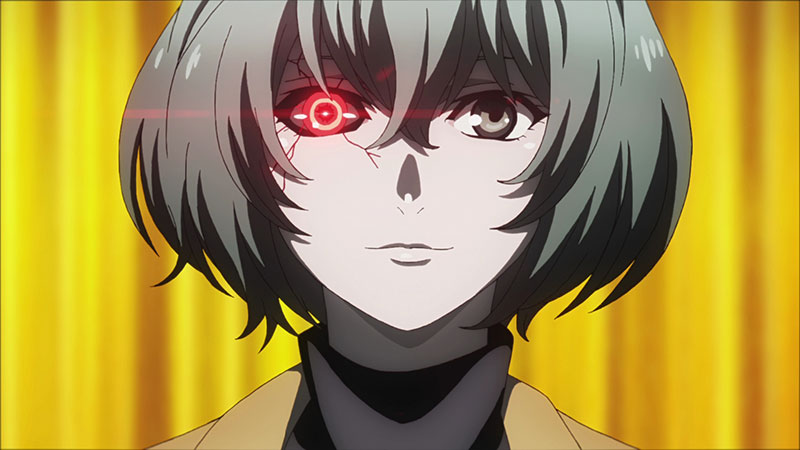
Some highlights include following a young Eto as an aspiring author with an editor who keeps their Ghoul identity a secret, and insights into the rivalry between Takizawa and Akira as they train to become Ghoul exterminators.
Episode 5, thankfully, is a rare time wherein the plot gets to breathe as we witness the key emotional highlight of this arc- confrontations between Hinami and Akira and Akira and Amon.
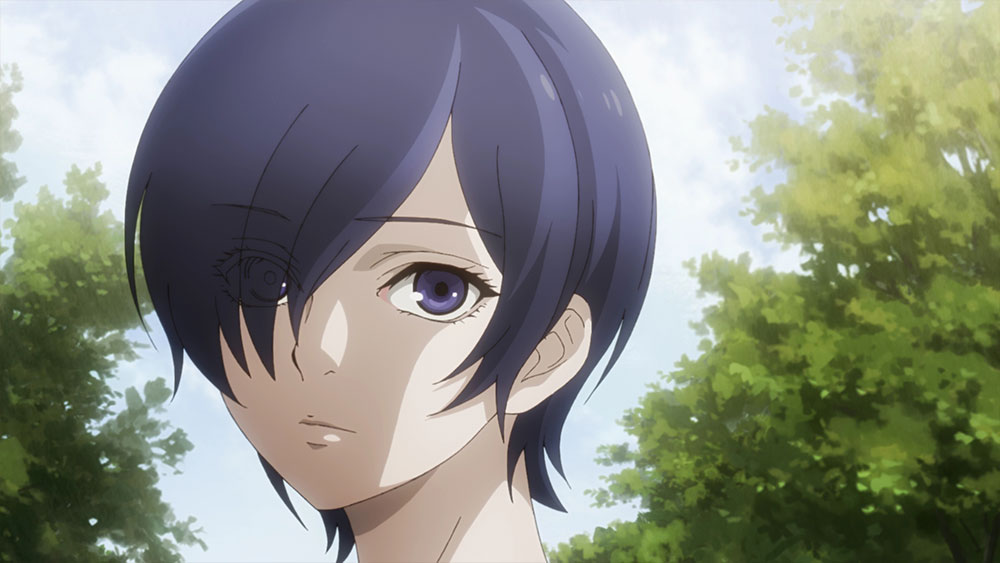
The final moments of the episode are very effective and showcase just what the series could have done more of if it had more episodes to flesh out the intricacies of the characters and their interweaving storylines.
I was disappointed to see the Clown Siege Arc reduced to an episode, though Donato is suitably creepy in his portrayal here as he taunts and tortures Urie whilst multiple clown-masked Ghouls cause chaos around Tokyo, complete with an unexpected twist behind the masks.
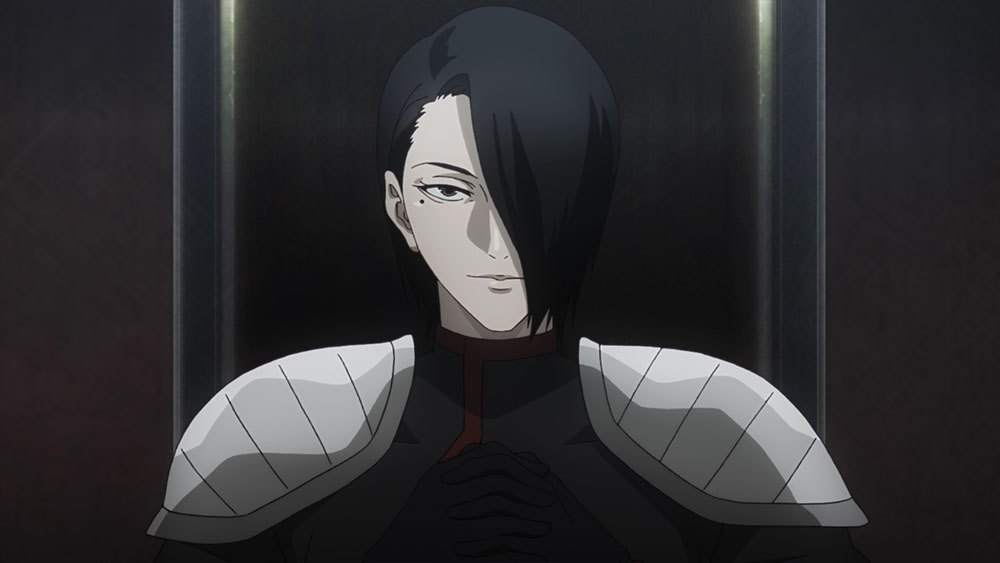
As Kaneki struggles with his new position of power the CCG finds themselves with a new leader in the form of Nimura Furuta, the sinister trickster and Secret Half-Ghoul who manages to pull the strings take down his own family to get to the top, working with both V and the Clowns.
His plan is to exterminate every last Ghoul living in Tokyo, which pushes Goat, the new alliance Kaneki forms with the remaining forces from Aogiri, to their breaking point as they are forced to move the surviving Ghouls underground.

It also motivates Kaneki and Touka to rekindle their relationship, which had been brewing ever since Kaneki saved her life way back during the days of Anteiku. This leads to an impromptu (and awkwardly executed) sex scene which escalates quickly as the two soon wed, following a bombshell revelation.
These events (which lead up to the birth of Dragon) in particular Mutsuki’s part in raising the ruthless Oggai and becoming a yandere for Haise/Kaneki, once again get rushed through and condensed, though the actual Dragon coming to life and its devastation of Tokyo are fairly well-realised.
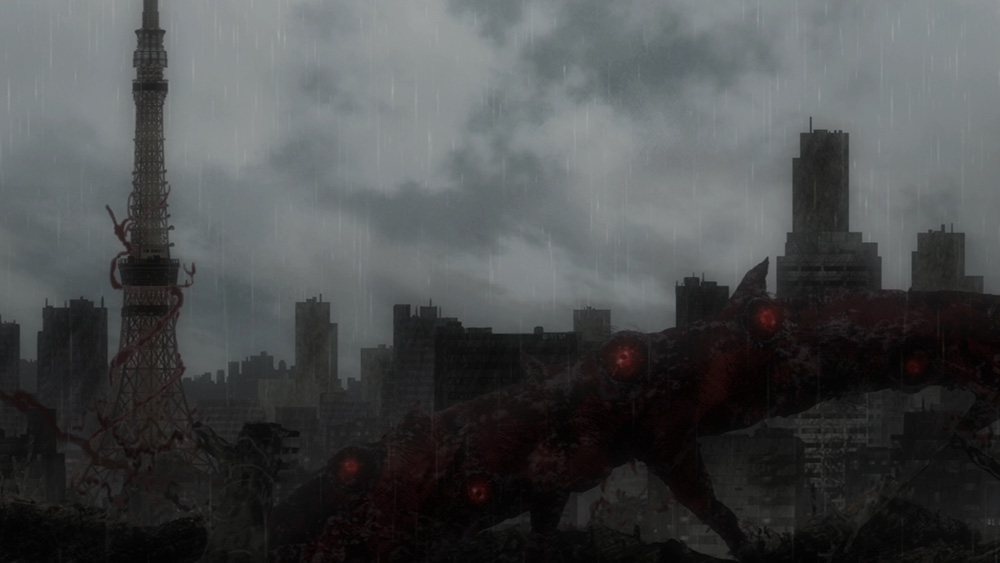
In the final major arc of the series, the Dragon Arc, the remaining Ghouls and Kaneki’s comrades team up with the CCG, whom are now in tatters thanks to Furuta’s defection, to save Kaneki from a horrific Kaiju-like form which is given the name “Dragon” by Furuta. It also sees the return of Hide (as spoiled by the boxart) who helps to build this bond thanks to his ties with Marude who takes the reins of CCG leader.
Kaneki must also do what we does best-retreat into his subconscious, only this time they have to accept who they really are and take responsibility for their past failures and move forward to defeat Furuta and the Dragon.
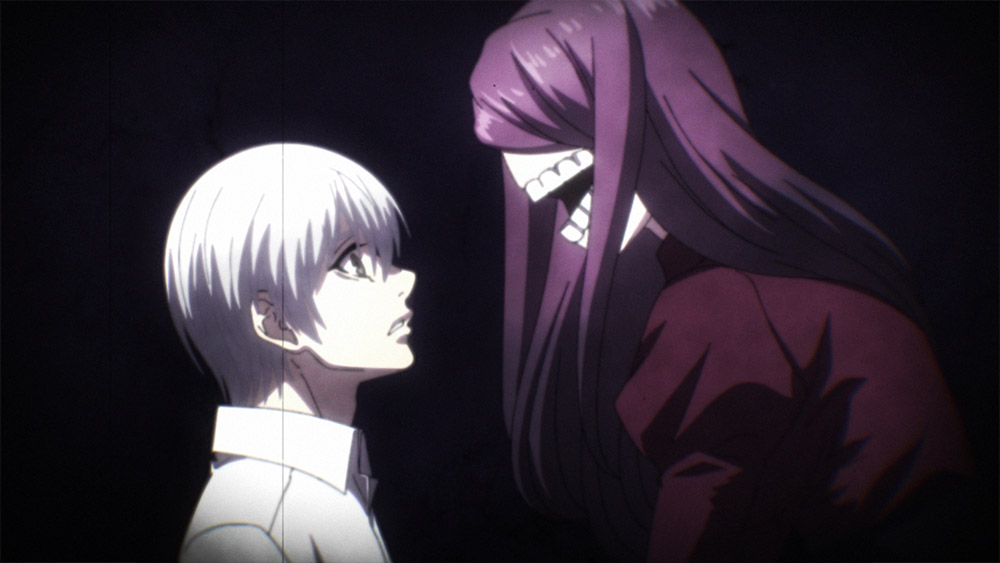
Meanwhile, the CCG/Ghoul alliance must defeat V and an unexpected foe which proves to be quite a threat. The conclusion of the series has some decent fights and the closing epilogue has an optimism rarely seen throughout the series but it all feels too hectic to be meaningful most of the time.
Looking at the direction, Toshinori Watanabe continues to do a decent job despite the limitations of having only 12 episodes to conclude the expansive storyline of Sui Ishida’s sequel manga by condensing the storylines.
Unfortunately, the animation from Studio Pierrot continues to be a letdown, failing to lend much impact to the action or characters, whose designs are bland and uninspiring compared to their manga counterparts. Character models also often look off.
I will give props to the execution of the Dragon though, as the giant mass of Kagune comes across pretty well in animated form.
Composer Yutaka Yamada’s score remains one of the key highlights of the series, adding a layer of depth to the scenes and action set pieces. The OP and ED this time around were underwhelming to my ears, especially after “Asphyxia” by Cö Shu Nie had slowly grown on me from the first part.
The included discs are the same as those produced by Funimation for their release and, as such, contain the standard special features you’d expect, such as episode commentaries and interviews with the English dub cast as well as textless versions of the OP/ED. The video and audio quality is decent, though the overall design of the anime doesn’t lend itself to the most stunning presentation, regardless of disc encoding.
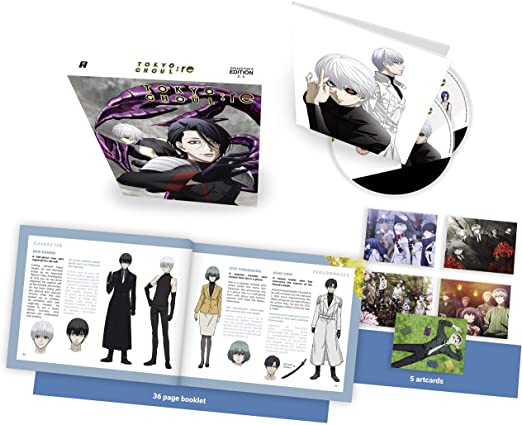
Anime Limited have once again released the series in both Limited Collector’s Edition and Standard Edition formats with the former being a chipboard box with a digipack and 36-page booklet. As a special bonus, the initial 250 copies also include a larger outer box that houses both this and the first part Collector’s Edition.
The booklet itself was again in both English and French and felt a bit light in terms of content, especially when looking at the booklets for the previous Tokyo Ghoul CEs, though this may due to limited assets being available.
Overall, Tokyo Ghoul: re Part 2 is a mixed bag in which much of the story is skimmed through, leaving most arcs and many character motivations barely explored and lacking the depth/nuanced they deserved.
When the story does decide to slow its pace, it delivers some emotional highs points which manage to convey the impact they had in the source material. However, the rest of the time, this adaptation is too frenetic in its pacing to effectively deliver a satisfying, let alone faithful adaptation.
It’s a shame to see but maybe one day the overall franchise will get a Brotherhood-style redo that more accurately and intricately explores Sui Ishida’s story of Ghouls and humans fighting to survive and live in peace within Tokyo.


